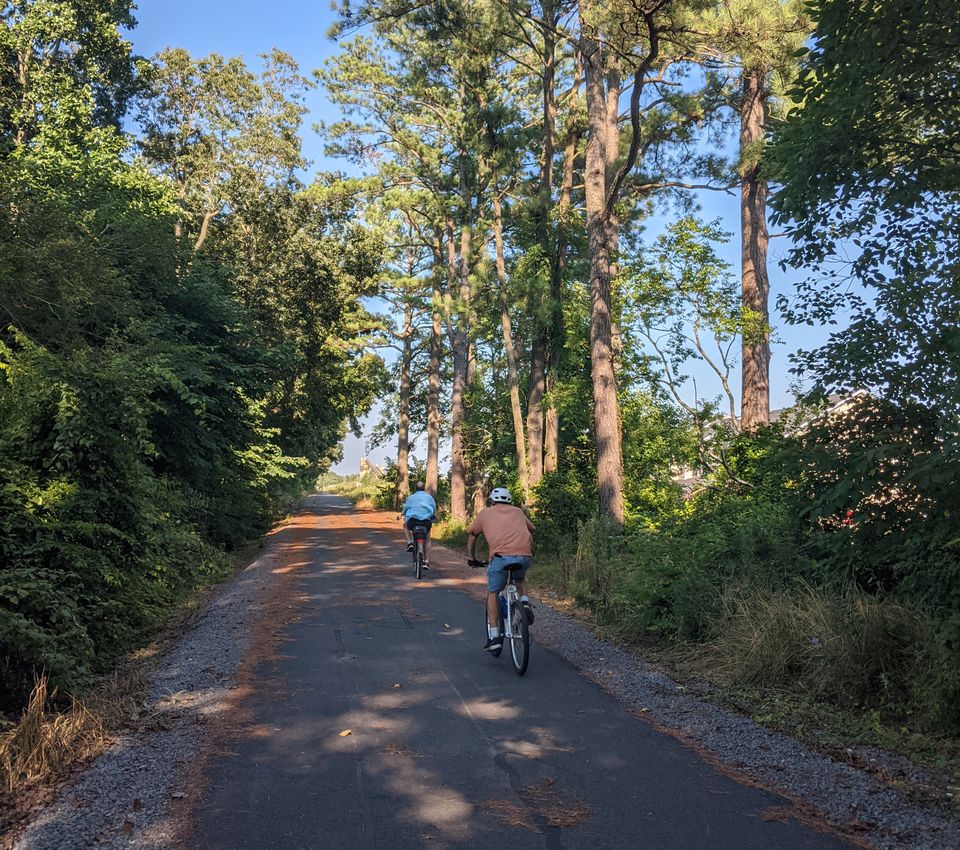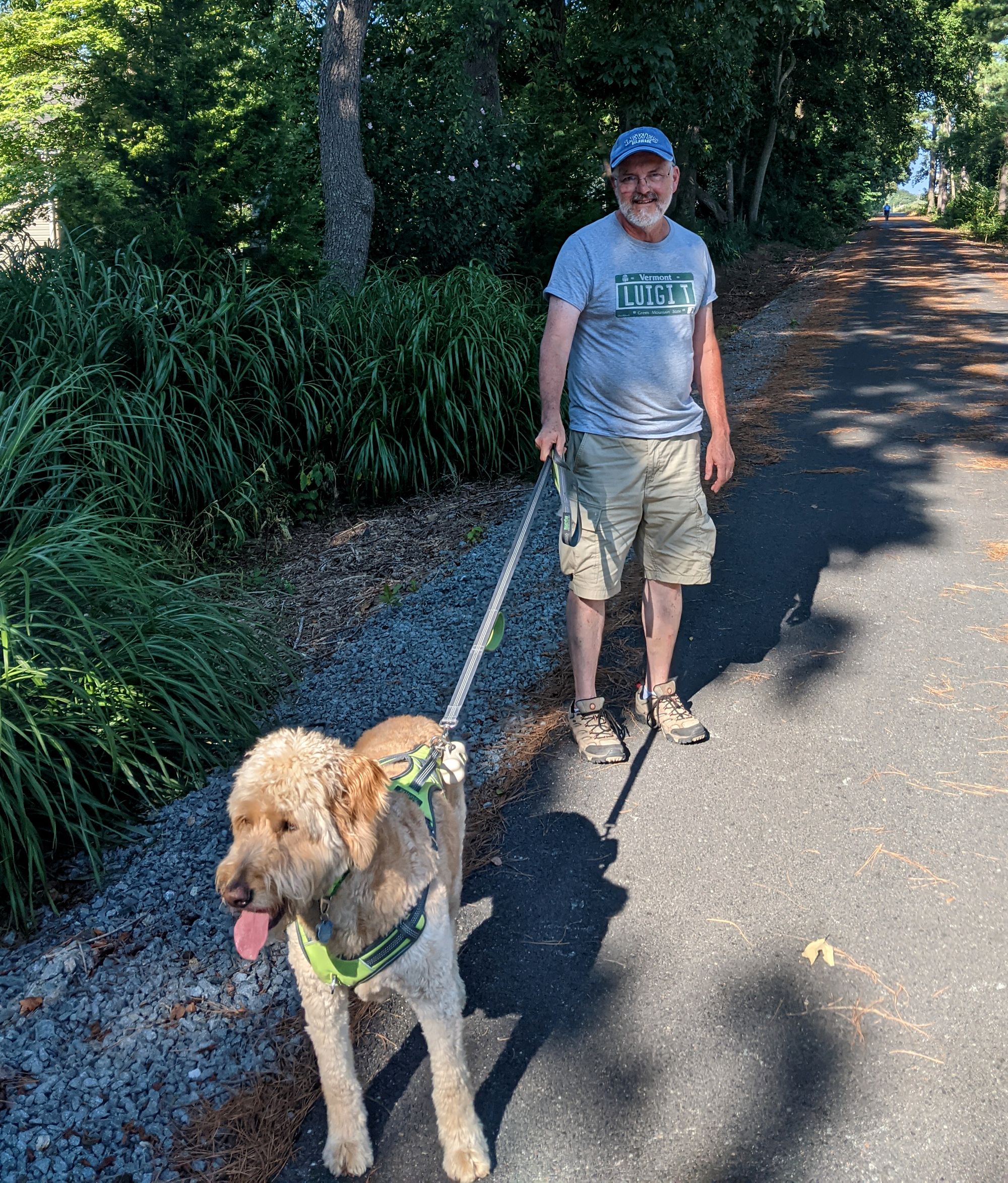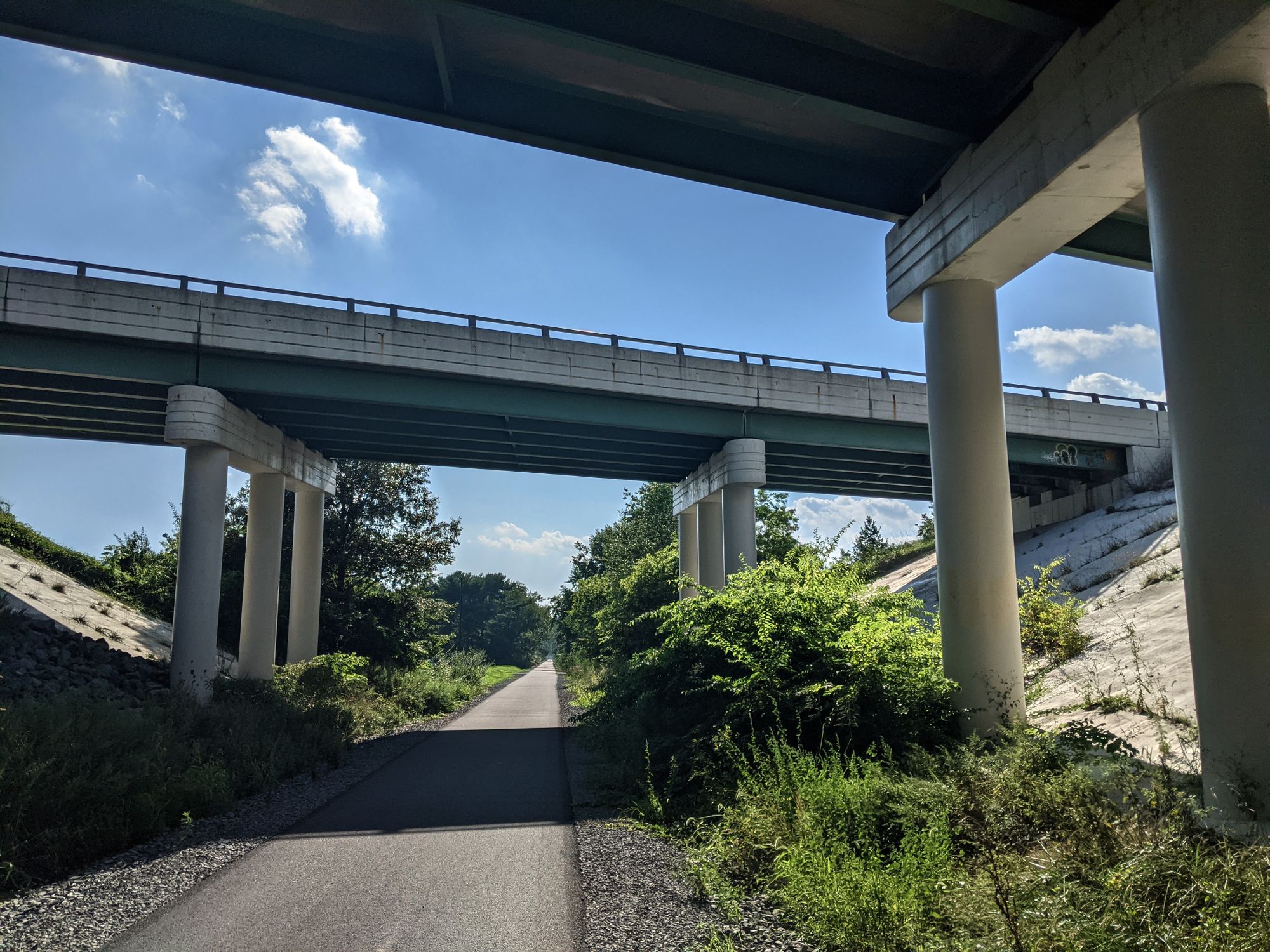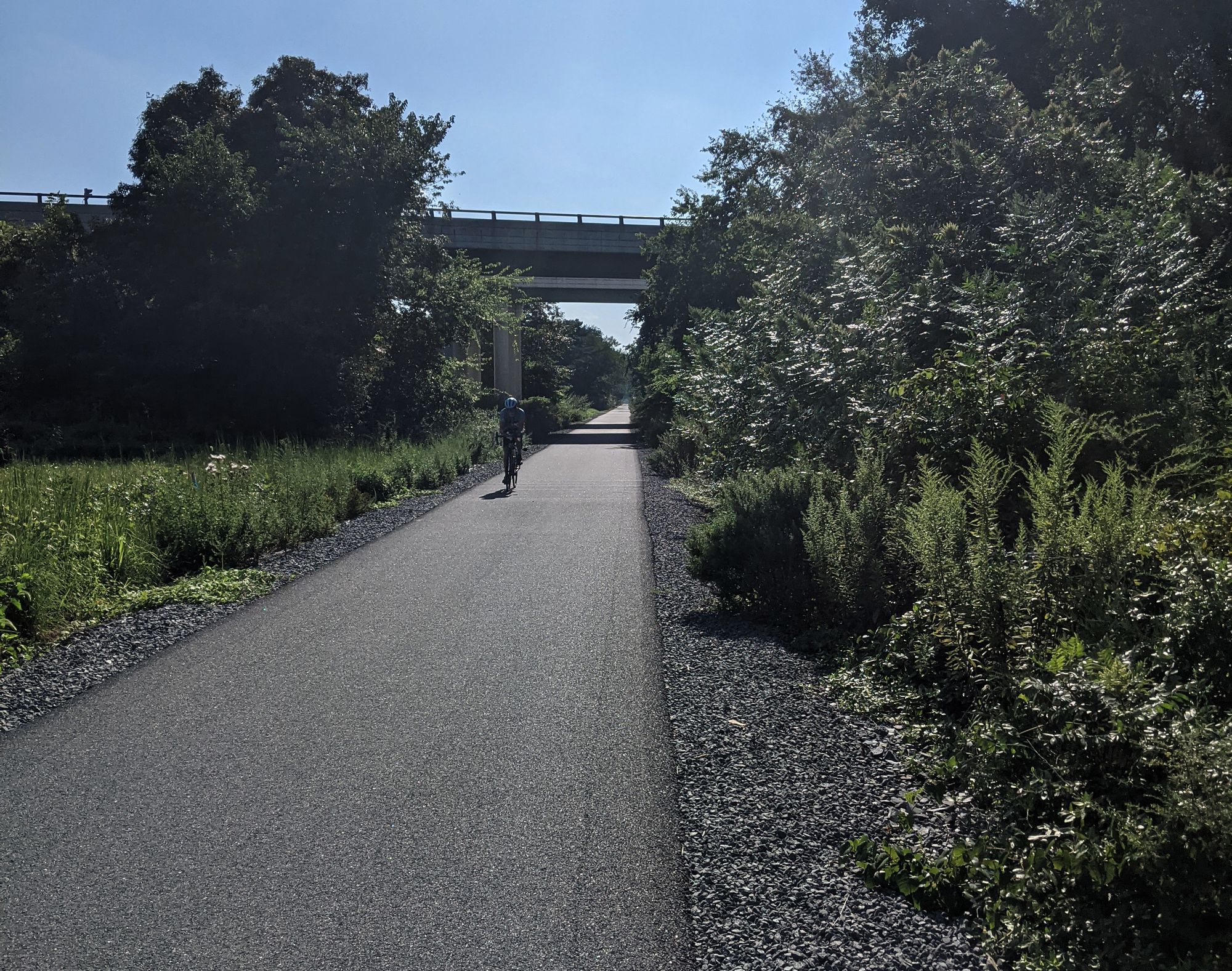Can Delaware reinvent its roads to make them safe for bikes?

If you’ve gotten into cycling recently, you’ve probably noticed everyone else has too.
Local shops could barely keep bikes in stock during the COVID-19 pandemic and it was hard to even get repair parts, said John Kurpjuweit, president of local riding and advocacy group Sussex Cyclists. Readily citing a number that seemed seared into his brain, he said he waited 170 days for a new bike (a delay likely also influenced by supply chain issues). He chalks up the spike in interest to people looking for ways to get out of the house.
He wasn’t grumbling about the demand, though, saying, “It’s good to see people out on the trail.”
But when people dig those bicycles out of the garage, do they have good, safe places to actually ride them in southern Delaware? Some advocates think more needs to be done and want to see the state transform the way it builds transportation to better include bike riders and pedestrians.
Bike danger in Delaware
Delaware made cycling news recently, and it wasn’t good. Streetlight Data, a company that analyzes transportation statistics, rated Delaware as the deadliest state when it comes to fatal crashes per bicycle miles traveled. Route 1 near the beaches, especially, has become notorious over the past few years for crashes involving bicycles.
James Wilson, executive director of the statewide cycling advocacy group Bike Delaware, points out that it’s not just cyclists who are getting in harm’s way, it’s pedestrians too.
When you go beyond fatalities, the numbers in southern Delaware shoot up. From 2019 to the present, there were 20 crashes in Kent County involving bicycles and 55 involving pedestrians, according to Delaware State Police Master Cpl. Heather Pepper. In Sussex County, those numbers are even higher: 78 crashes involving bicycles and 107 involving pedestrians since 2019.
And those are only the official numbers. Kurpjuweit maintains that a lot of accidents aren’t reported. For example, a rider might crash into a car pulling out of a driveway. A car door gets scratched, a bike is bent, nobody is badly hurt, and there’s no police report.
A web of bike routes all over the state?
A statewide network of routes where people can feel safe riding and walking is on Wilson’s wish list. There are a number of dedicated bike paths in the state, notably the Jack Markell Trail connecting New Castle and Wilmington, but they are fragmentary routes dotted here and there. It’s far from a network. The as-yet uncompleted Lewes to Georgetown bike path will eventually be the longest in the state at close to 17 miles, Wilson said.
Of course, people don’t have to ride on bike-only paths to feel safe. Newer road projects often have a bike lane designed in, but even then people might not feel secure.
Route 1, for example, has a bike lane in parts, but it’s also for buses, which hardly adds to the appeal for a cyclist. Kurpjuweit also noted that frustrated drivers stuck in Route 1’s notorious traffic often move into the bike lane for a couple of miles.
Wilson suggested that I take a ride on the shoulder of Route 1 to really understand what it’s like. Envisioning the headlines if I were to be run over while researching an article about bicycle safety, I declined, no doubt missing out on some vivid details but also living to write another day.
“One of the things we find is it’s sometimes very uncomfortable to ride a bike on some of the roads here,” Kurpjuweit said. “Cars are whizzing by, some of the roads don’t have shoulders.” Particularly novice riders, he said, but even experienced ones don’t like cars going by fast and close. “They feel very safe riding on the trails; they don’t have to compete with traffic.”
Wilson’s idea for a statewide network of bike-friendly routes might seem extremely ambitious, given the way roads all over the state have been built for generations almost exclusively with cars and tractor-trailers in mind. But one expert thinks it’s doable.
How to build a bikeable network
An arrow-straight paved path runs from Lewes toward Georgetown, a quiet east west route passing under the bumper-to-bumper tourists crammed on the north-south highway at the Nassau Bridge. Take a walk down the trail and you’ll soon see a cyclist or three in the distance, rapidly coming closer and giving you a wave as they go by. You’ll also pass people out on a walk, holding the leash as their dog strains to go sniffing after a squirrel or rabbit.
This former railroad line has the feel of a shortcut, the kind of route a kid might take behind neighbors' houses and through woodlots off the beaten path. It offers a peek into backyard flowerbeds and parking lots behind businesses. It’s only partly finished, with about 6 miles paved on the east end and new work set to begin on the Georgetown end.
Tom McSweeney of Lewes, out for a walk with his dog Rosie, said he also rides bike on the trail. He’d just done a ride down to Cape Henlopen and back that day, and thinks he’ll probably bike all the way to Georgetown once the trail is complete.
“We love it, it’s one of the reasons we decided to settle here,” he said, having recently moved from Vermont.

More of this kind of bike trail is certainly one thing groups like Sussex Cyclists and Bike Delaware wouldn't complain about, but better routes don’t just mean rails to trails. They could also include safer bike lanes on roads, or ways for people to get from one calm road to another without crossing a dual highway.
Cycling advocates, along with state officials, are looking at a new way to evaluate bike travel developed by Professor Peter Furth of Northeastern University. Furth ranks routes on a scale of 1 to 4 based on how safe riders feel. Bike Delaware’s goal is for people to be able to travel all over the state on a route they feel safe on — a level 1 or 2.
Just because a road has a bike lane doesn’t mean it will rank well. Furth considers a number of factors, like the amount of traffic, the width of the road, or if there are cars parked along the route — leading cyclists fearing a catastrophically opened car door to move further out closer to traffic. So a local street without a bike lane, but with low traffic and plenty of room, might score very well, while a highway like Route 1 with a bike lane might score poorly.
Furth also looks at how places like the Netherlands build their roads, since they’ve had success in getting lots of people using bikes.
(This great bike infrastructure overseas could also be one reason for some of the accidents involving international students on Route 1, Wilson pointed out. They’re not used to the conditions on U.S. roads).
So is redoing the way transportation has always been done in the state only a pipe dream, a pleasant fantasy for cycling fanatics?
That’s not how Furth sees it. Yes, cycling infrastructure is expensive, he said. But it’s actually far cheaper than highways for cars.
“A mile of really nice bike lane might cost between $100,000 and $1 million,” he said. A mile of reconstructed arterial road could cost millions more.
In the Boston area where he lives, he said, governments spend about $600 per year per person on infrastructure for cars. They spend about $400 per person on public transportation. And they spend about $2 per person per year on cycling. You could spend 10 times more on cycling using amounts of money that would basically be rounding errors in budgets for other kinds of transportation, he said.
Of course, the cost can’t be measured only in dollars. Furth noted that other factors come into play, like taking away space on roads from cars or cutting into parking areas.
But if you look at the vision statements of many cities and departments of transportation, Furth said, what they want is safe ways for people to ride bikes for exercise and sustainable travel. (In 2011, Delaware lawmakers passed a resolution toward that end, making the Department of Transportation responsible for developing bike and pedestrian networks in the state.)
Although some cities in the U.S. are working to improve, Furth said, the places in North America doing bike infrastructure the best are in Canada, cities like Vancouver, Ottawa and Montreal. Some West Coast communities are also ahead of the curve, he said, citing Davis, California; Portland, Oregon; and Seattle.
Paving old railroads is a great option for bike routes, Furth said, but there are a number of other ways it can be done, like building connections between safe local streets and reconnecting roads that were separated when highways came through. A road with slower traffic could have a built-in bike lane, while a road with higher speed traffic should ideally have a separate bike lane somewhere in the right of way, he said.
There’s room to do that, he said. “Take a typical two-lane road, which are all over Delaware. Right of way does not end at the pavement; the state owns land on either side.”

How it’s going as of now
Delaware is putting money into rails to trails and other bike infrastructure, but it needs to do more, according to Wilson. He pointed to the years-long efforts on the Lewes to Georgetown trail and said, in essence, that the state should just finish it already.
Reaching the cycling goals states and cities have is “never going to happen with the incremental approach and incremental budgeting that we’ve used in the past,” Furth said.
Right now, the timeline for finishing the Lewes to Georgetown trail is sometime in the next seven or eight years, according to John Fiori, the bicycle coordinator for the Delaware Department of Transportation. “It all depends on the availability of funding,” he said. Construction on the trail started in 2016.
There are other projects in the works. DelDOT is studying how to build a bike route along Route 1 that would let cyclists get off the highway. That study is still underway, and could be done by the end of the year. After that, Fiori said, they’ll recommend segments of the route for design and construction.
Even while that study is going on, though, the department is already planning to work standalone bike paths into upcoming projects. One example is a path that will run from Minos Conaway road near Lewes down almost to Route 9.
“And then from that point, we have the (Plantation Road) project that would be picking up where the path ends and extending that path all the way to 24,” Fiori said.
Part of the Plantation Road work is projected to start in 2022; the Minos Conaway work is slated to begin in 2023.
The existing Georgetown to Lewes trail runs about 6 miles or so from Gills Neck Road to Cool Spring Road. Work to extend that west to Fisher Road could start this fall, Fiori said. From the other direction, work is slated to start anytime on a short section from the area of the Georgetown Little League park east to Airport Road. You can find a map and description of the trail on the Delaware Greenways website.

Another bike trail in the area, the Junction and Breakwater Pathway, runs between Lewes and Rehoboth. And a major project underway in Dover, the Capital City Trail, will eventually be nearly 15 miles.
Fiori said there are no rails to trails plans at this point in western Sussex County, but he noted projects like that often come about from public demand.
Although eastern Sussex County has more in the way of bike paths, Kurpjuweit pointed out that roads are usually pretty calm in western Sussex. That part of the county has more rural roads with less traffic.
Around the country, “The pace is increasing, but we still have a long way to go and bicycling is still treated as like a special interest group, as opposed to something for everybody,” Furth said.
“Will we have safe bicycling in my country for my grandchildren, or will we have to wait for my grandchildren’s grandchildren? … The status quo is, yeah, we’re going to be waiting for the grandchildren’s grandchildren, or maybe their kids.”
More info on Sussex Cyclists
The nonprofit bike club is abut 20 years old and does a number of group rides each week for cyclists at different levels. In addition to enjoying the sport together, they promote bike safety and advocate for trails.
Visit www.sussexcyclists.org for more information or to sign up for rides.
In-depth reading: Blueprint for a bicycle-friendly Delaware
To get every story from the Delaware Independent, sign up here
More stories:
An apartment complex could bring more than 500 new residents to Bridgeville